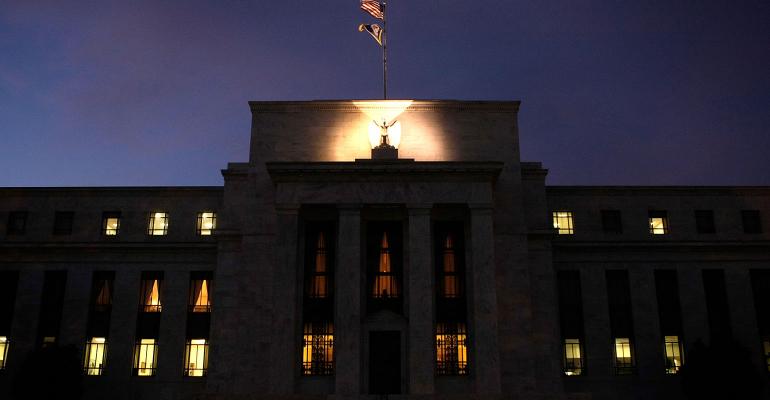I’ll start here with an about face. It was just a few days ago—though days that saw both brisk data and rather alerting Fedspeak—that changed the market’s opinion and therefore my own on the likelihood of a Fed hike in March. To wit, we find April Fed Fund futures at 84 basis points vs. 63.5 basis points in early February, which pushes the odds of a March hike to over 80 percent.
There are other "thoughts" I have about the Fed hiking sooner rather than later. First, they might want to get ahead of what could be an ugly debt ceiling fight perhaps within the GOP itself. The deadline is March 31, although they’ll have a lot of time before a crisis ensues.
Second, if we believe Trump, Yellen is a lame duck. So gone, perhaps, is her erring on the side of monetary patience, and in its place is an urgency to get ahead of the fiscal side of the equation. Let’s be honest with each other, the general proposals unveiled are hardly gradualism. In a sense it’s a warning: you spend more, you tax less, you’re gonna pay. This may be too conspiratorial, but if the raw economics justify a hike then the fiscal threats rather encourage that suspicion.
If we get that hike we’re going to have to hear more about use of the balance sheet, especially to offset the fiscal policy potential. That means less Fed buying (I don’t expect actual selling) and from the fiscal side more long bond issuance as Treasury Secretary Mnuchin has alluded to.
I can’t recall a Fed hiking cycle that came with a bear steepening of the yield curve, but can certainly envision it. (P.S. we have not had a bear steepening hiking cycle.) My technicals project ten-year treasuries to 2.75 percent but I think a rise to, say, 3 percent would stall stocks, rally the dollar and finally give the VIX a jab. My bearishness doesn’t yet go beyond that sort of level.
It works this way: Fed Fund futures measure the average rate for the month. If the average currently is 62.5 basis points and the meeting is, like March’s was, mid-month then the 75.25 basis point "average" seen for March implies a rate in the second half of the month closer to 87.5 basis points – (62.5+87.5)/2 – or largely discounting a rate hike to that new 75-100 basis point range.
How the market got there is pretty straightforward. Much of the emotion has been robust, such as the gains to the regional manufacturing reports, the upward revision to University of Michigan’s consumer sentiment survey, the Chicago Purchasing Managers Index, and the Conference Board survey on Consumer Sentiment. The latter reached its highest level since (gulp) 2001. Have things really improved that much?
It’s a good narrative: better sentiment, enhanced animal spirits, people feeling good so maybe they spend more, save less, return to the labor force (i.e. increased Labor Participation) and all is well with the world.
However, as David Rosenberg of Gluskin Sheff advises, sentiment does not contribute to GDP. Indeed, some aspects to recent data such as ISM’s gain in New Orders are at odds with more empirical measures of such things like January’s drop in core Durable Goods measures. Still, the stock market is rising and that’s contributed to the rise in confidence. Though equity valuations, too, don’t contribute to GDP directly.
David Ader is the Chief Macro Strategist for Informa Financial Intelligence





